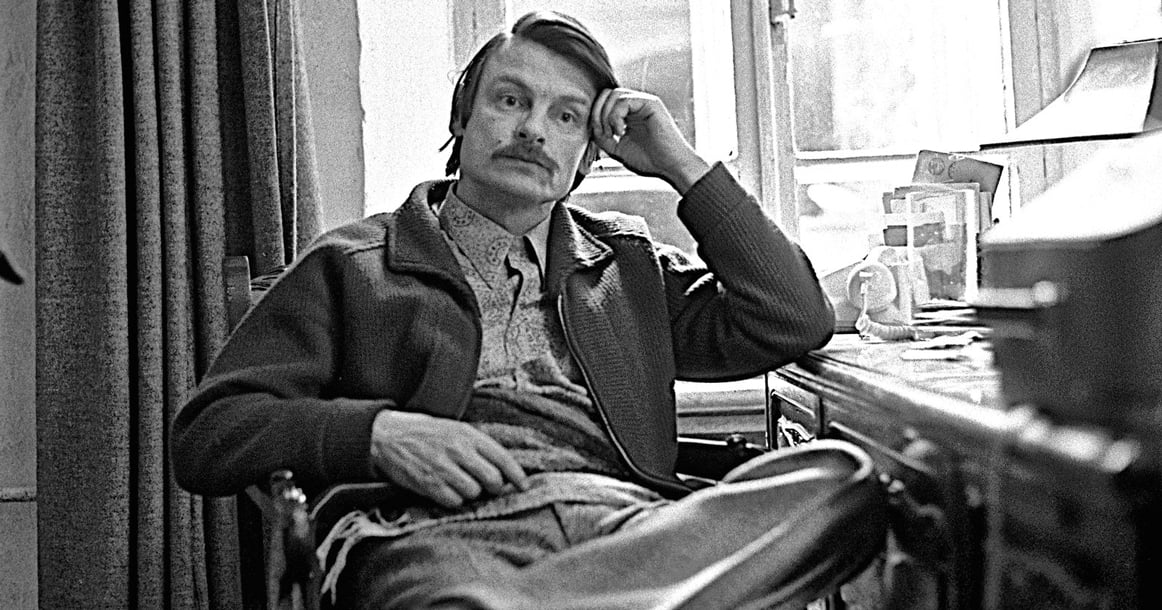There is a widespread belief that on the set of Andrei Rublev, the director treated animals cruelly, in particular, he burned a live cow. We checked what arguments there are to support this statement.
The fact that Andrei Tarkovsky cruelly treated animals during the filming process is reported in a variety of sources: from websites animal protection organizations to forums with film discussions. Director Kira Muratova in an interview admittedthat after she learned about this story, Tarkovsky “ceased to exist for her.” Muratova's position share and some users of blogging platforms and social networks.
For the first time, the allegedly burned cow became known even before the end of filming, which took place from September 1964 to November 1965 in Pskov, Suzdal and several other historical cities of Central Russia. In September 1965, the editors of the newspaper Izvestia received letter from a professor at the University of Latvia Natalia Temnikova. She, citing a “good friend from Vladimir,” said: during filming, filmmakers “douse a live cow with kerosene and light it, imagine how the animal suffers, runs around in the fire, moos. They do the same with horses.” The trial began and the charges commented Director of the Sixth Creative Association Danilyants: “A cow running out of a burning barn, engulfed in flames, was filmed. <…> For this purpose, one cow was taken, which was handed over to the slaughterhouse after filming. “At present, I have given instructions to the film crew that in future filming of this kind the use of animals should not be allowed under any circumstances.” Danilyants did not specify how exactly this scene was filmed and whether the cow was set on fire alive.
At the end of 1966, pre-premiere screenings of the finished film were held in Moscow, including for journalists. On December 24, the newspaper “Evening Moscow” appeared article entitled “...And the Cow Burned,” in which the author reported that “at the request of the director,” an animal was burned alive during the filming of a certain film. Neither the title of the film, nor the name of the director, nor any other details that obviously point specifically to this work by Tarkovsky are mentioned in the text. Later, information about the cow being burned alive was confirmed by the director of the Vladimir-Suzdal Nature Reserve Alisa Aksenova and Brezhnev's assistant Evgeniy Samoteikin, who allegedly “was involved in this story himself, received complaints, quelled dissatisfaction, made efforts to prevent the story from getting into the newspapers...”.
Another indirect confirmation is in Solomon Volkov’s book “Testimony,” which is the memoirs of composer Dmitry Shostakovich (although many researchers seriously doubt in their authenticity). This book has one fragment: “A talented director, a young man, while making a film, decided that it needed a cow on fire. But no one wanted to set the cow on fire - not the assistant director, not the cameraman, no one. Then the director himself doused the cow with kerosene and set it on fire. The cow was running around mooing like a living torch, and they were filming her.” Volkov himself connected this story with Tarkovsky and “Andrei Rublev” in a note to this statement.
The director understood that, due to spreading rumors, the film might not be allowed to be released, and therefore tried to refute them. Publication in “Evening Moscow” Tarkovsky named insinuation, and in a letter to the chairman of the Committee for Cinematography under the Council of Ministers of the USSR, he complained that the newspaper refused to publish his answer. In February 1967, in an interview with Alexander Lipkov, director stated: “We didn’t burn the cow, it was covered with a piece of asbestos.” Indignation over such accusations Tarkovsky expressed and later, when he was reminded of this story.
Tarkovsky’s position is shared by the director of the film, Tamara Ogorodnikova. In a conversation with film critic Maya Turovskaya, she named the story of the cow being burned alive was “completely far-fetched.” “While we were filming one of the episodes of the Tatar invasion at the Vladimir Cathedral, a group from the Central Documentary Film Studio came there and asked me for permission to film our filming. I foolishly allowed it, they filmed just this episode with the cow, and everything went from there. In fact, everything was elementary. It was necessary for a burning cow to rush around the yard; they covered it with asbestos, ordinary asbestos, and set it on fire. She naturally got scared and started running, which was what she needed to do. Well, of course, the cow didn’t burn - I was present at the shooting, and all this was with me. You look at the pictures, it’s not like a cow - people are burning, but it doesn’t occur to you that they are really being burned; this is a normal movie,” Ogorodnikova explained. She connected the article in Evening Moscow and the rumors with the reluctance of some people to allow the film to be released.
Thus, there are arguments in support of two main versions: the cow was burned alive or the cow was covered with asbestos and the “cape” was set on fire. Evidence from the first group is difficult to consider reliable: their authors were not directly present during the filming of this scene, many of them rely on the stories of third parties or are not based on anything at all. The arguments about the asbestos “cape”, expressed primarily by the participants in the filming of “Andrei Rublev”, lack these shortcomings. At the same time, it is impossible to reliably confirm this version, and Tarkovsky and his associates in this situation are obviously an interested party and sought to get the film admitted to the screens.
This is not accurate
- https://www.mosfilm.ru/news/?ELEMENT_ID=23180
- https://www.kinopoisk.ru/media/article/3303424/
- M. Turovskaya. 7½, or The Films of Andrei Tarkovsky
If you find a spelling or grammatical error, please let us know by highlighting the error text and clicking Ctrl+Enter.







